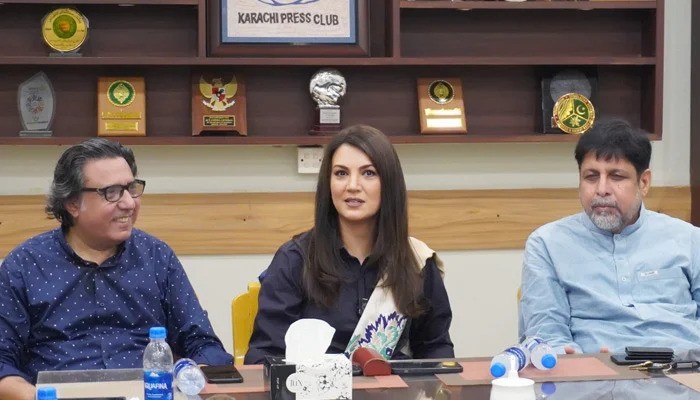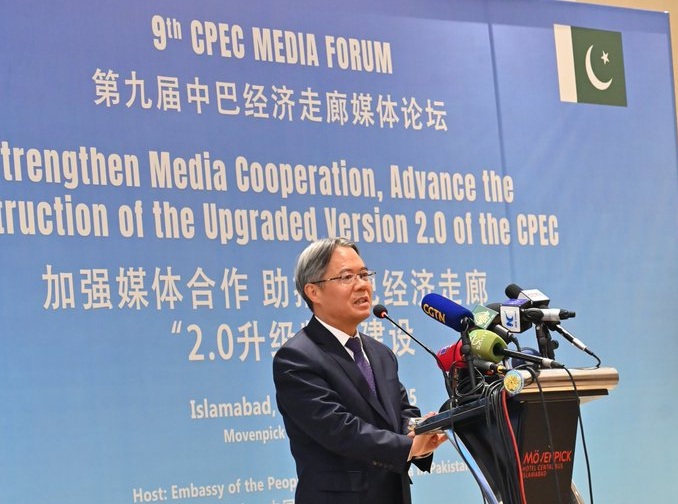Reham Khan—the journalist, former BBC presenter, and ex-wife of former Prime Minister Imran Khan—has recently launched a new political party, the Pakistan Republic Party (PRP). The media response to her political foray reflects both the complexities of Pakistan’s press landscape and the polarized nature of its political culture.
Let’s have a look on how the mainstream and digital media in Pakistan have covered the PRP’s launch, exposing gaps in journalistic objectivity, challenges in political framing, and the influence of personal narratives over ideological substance.
1. Initial Media Reaction: Coverage or Curiosity?
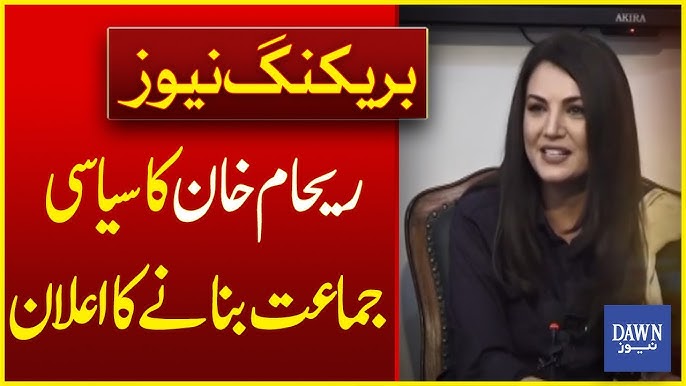
When Reham Khan announced the formation of the Pakistan Republic Party at the Karachi Press Club on July 15, 2025, the story was picked up by prominent media outlets like Geo News, ARY News, Dunya News, Dawn, Express Tribune, and various digital platforms. Headlines ranged from factual to skeptical:
- “Reham Khan launches new political party amid call for reform” – Geo.tv
- “Imran’s ex-wife Reham enters politics” – Daily Pakistan
- “New party or personal vendetta?” – some blog titles and social media chatter
While many outlets provided factual overviews of the event—mentioning her focus on women, farmers, legal reforms, and transparency—others leaned heavily into her personal background, emphasizing her relationship history more than her political message. This choice reveals the media’s tendency to sensationalize personalities over platforms.
2. Over-Personalization of Coverage
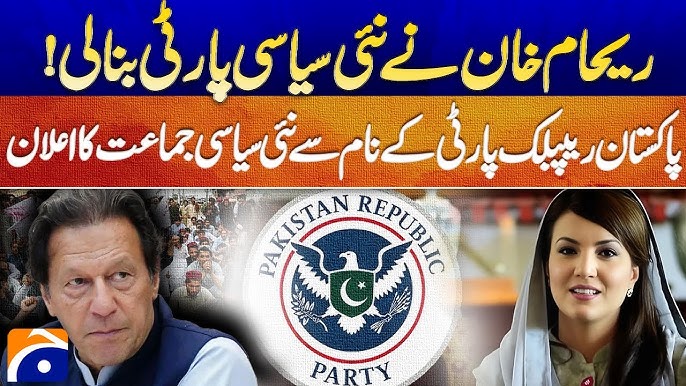
One glaring issue with much of the media coverage is over-personalization. Rather than examining the ideological framework or organizational structure of the PRP, media stories fixated on Reham Khan’s past marriages and previous criticism of Imran Khan. This narrative overshadows the political identity of the party and reduces the discourse to gossip and drama.
This isn’t surprising in a country where personality politics often replaces issue-based journalism. However, it is problematic. By making the coverage about who she was married to, not what she stands for, the media inadvertently delegitimizes her political effort before it even begins.
3. Lack of Policy Examination
Another critical gap in the media coverage is the absence of policy analysis. While Reham mentioned key areas such as banning multi-seat candidacies, decentralizing power, and reforming the electoral process, none of the mainstream reports deeply analyzed the viability or originality of these proposals.
For instance, her call to disqualify candidates who contest and vacate multiple seats is not new—it has been a debated issue in Pakistan for years. Similarly, devolution of power and local governance reform are constitutional obligations that have long been neglected. Yet, the media failed to interrogate whether PRP has a roadmap or mechanism to implement these goals.
Instead, media houses opted for shallow soundbites, missing the opportunity to foster an informed debate about how new parties might address structural issues in Pakistan’s democracy.
4. Visual Symbolism and Narrative Construction

Reham Khan unveiled the logo of her new party, featuring a crescent moon and eagle—intended to signify strength and vision. However, many netizens, and even a few media segments, pointed out its resemblance to Western security logos, particularly the US Department of Homeland Security.
Rather than delving into the symbolism and its resonance with Pakistani identity or political ethos, the media coverage turned this into a trivial “logo copycat” controversy. While design choices are fair game for critique, their interpretation should lead to insightful questions: Does this reflect a lack of originality? Is it an appeal to modern governance values? Or is it simply a branding misstep?
Instead, the story became a meme rather than a moment for mature media analysis.
5. Social Media vs Traditional Media
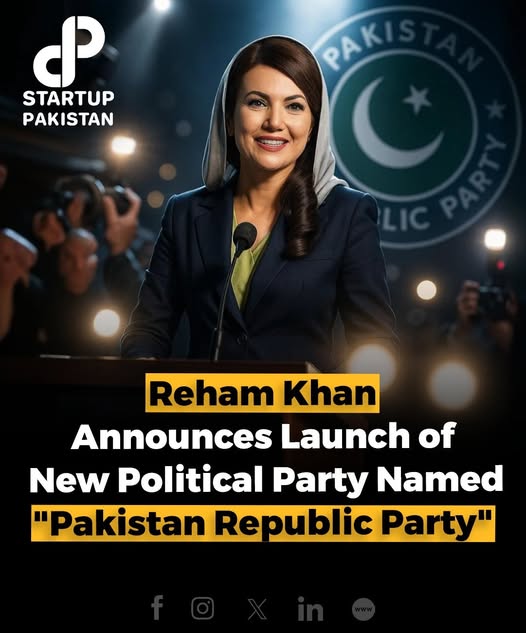
Interestingly, social media platforms offered a more diverse spectrum of opinions. X (formerly Twitter), YouTube vloggers, and TikTok commentators debated both the substance and optics of the PRP launch. Supporters praised Reham for “breaking male-dominated political barriers,” while critics accused her of trying to settle political scores through a party.
Some independent journalists asked relevant questions:
- Who funds this new party?
- What electoral strategy does she have?
- Does she have support beyond urban elites?
These are the kinds of questions that traditional media largely ignored.
6. Gender Bias in Coverage
Reham Khan’s entry into politics also exposed the gender bias in Pakistan’s media coverage. Male politicians who launch new parties (e.g., Jahangir Tareen’s IPP or Mustafa Kamal’s PSP) are usually examined in terms of vote banks, ideology, and provincial networks. In contrast, the focus on Reham’s personality, marriages, and fashion betrays the patriarchal lens through which female politicians are often viewed.
The lack of coverage about her policy team, legal advisors, or manifesto committees reveals that women in politics are still not taken as seriously unless they are dynastic heirs or wives of political giants.
7. Constructive Suggestions for the Media
The media must evolve if democracy is to thrive. Here’s what newsrooms should do better when covering new political entrants:
- Issue-Based Framing: Focus on what the party stands for, not whom the leader once married.
- Compare and Contrast: Analyze how the party’s agenda differs from mainstream parties.
- Track Development: Monitor whether promises—such as forming working groups and releasing a manifesto—are fulfilled.
- Engage Political Analysts: Involve neutral experts to assess impact and feasibility.
- Highlight Grassroots Engagement: Report on whether the party is building district-level presence.
8. Final Thoughts: Spotlight vs Scrutiny
Reham Khan’s PRP launch received plenty of media attention, but little meaningful scrutiny. The attention was focused more on her personality and past than on her political proposition. This reflects a larger issue in Pakistani journalism: media often act as amplifiers of noise, not interpreters of political substance.
A new political party led by a non-dynastic, non-feudal woman deserves both fair coverage and tough questions. To ignore her effort as “irrelevant” or reduce it to a personal saga is not just lazy journalism—it’s a missed democratic opportunity. Whether PRP will become a serious contender or fade into obscurity is yet to be seen. But how the media chooses to report on such efforts will determine whether our political discourse matures or remains trapped in the cycle of drama and distraction.
Mr. Sabahuddin Qazi is Editor-in-chief of Press Network of Pakistan.

